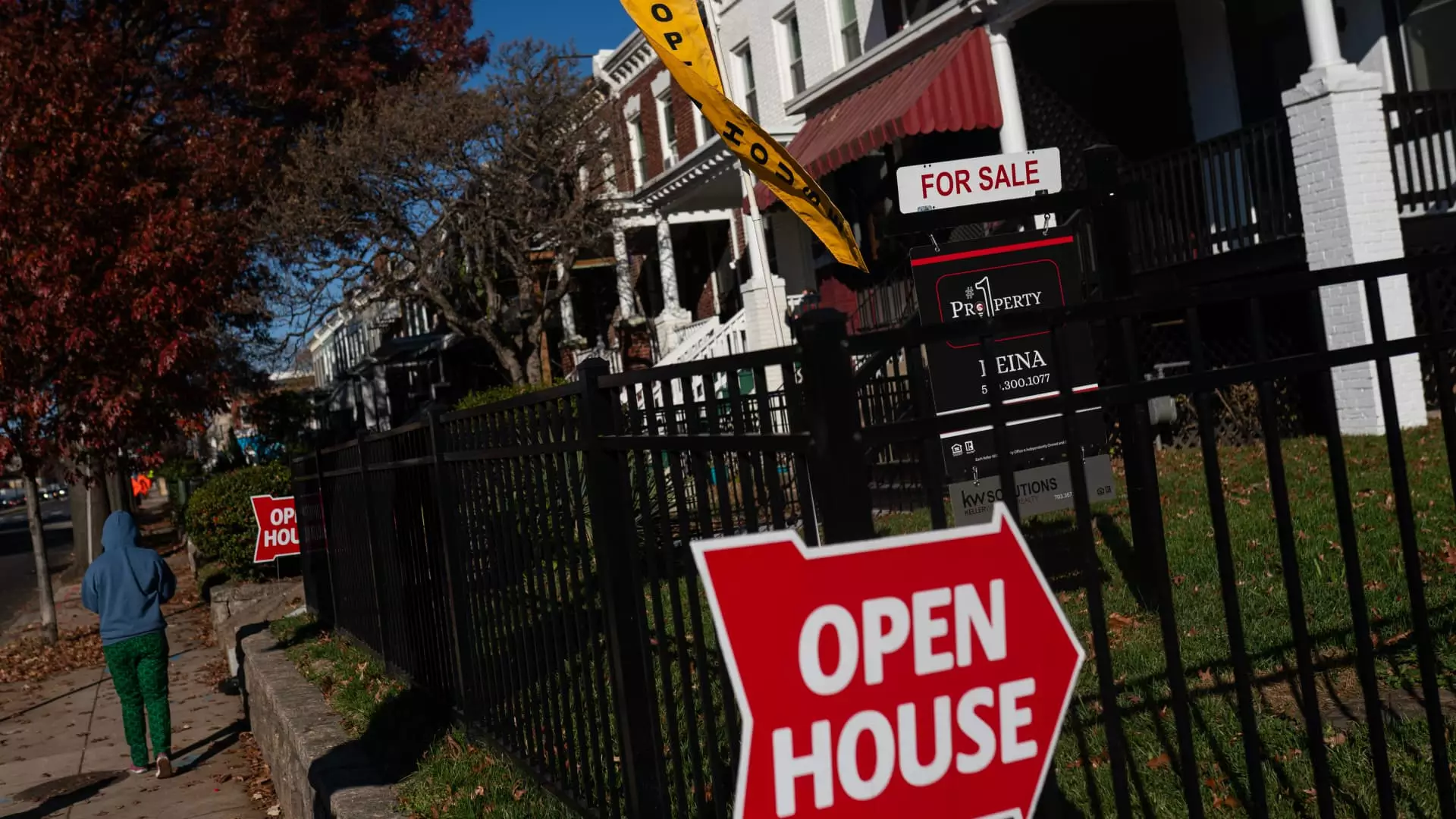The mortgage sector has recently exhibited concerning signs of instability, as evidenced by a surprising 6.2% drop in mortgage application volume last week. This decline comes after a series of encouraging gains, leaving analysts wondering about the sustainability of the market’s previous momentum. The recent uptick in mortgage rates, now averaging 6.72% for 30-year fixed-rate mortgages, combined with a pervasive cloud of economic uncertainty, has effectively dampened aspirations for many prospective homebuyers and those looking to refinance. Such a retreat indicates not just fluctuations in interest rates, but a broader anxiety about the economic landscape.
The Impact of Rising Interest Rates
Mortgage rates, which merely a few years ago reached record lows, now threaten to stifle demand with their steady rise. This week marks the first increase in nine weeks, a seemingly innocent shift that holds alarming implications. With the average contract interest rate ticking up from 6.67% to 6.72%, the cost of borrowing continues to rise, forcing individuals to rethink their financial decisions. Refinance applications plummeted by 13%, even though they remain 70% higher than this time last year. However, it’s crucial to emphasize that this numerical comparison skews perceptions; many homeowners simply can’t benefit from refinancing after already taking advantage of previous historic lows.
The Stagnation of Purchase Applications
In stark contrast to the declining refinance applications, the purchase applications showed minimal growth, edging merely 0.1% higher week-to-week. Even though this marks a slight uptick, it’s crucial to understand that a larger context is at play. The fact that purchase applications are 6% above the same period last year certainly boasts a hint of optimism, yet such growth is relatively marginal. A notable contributor to this trend is the increasing inventory of homes available for sale, combined with slight stabilization in mortgage rates. These factors may bolster confidence amongst some buyers, yet they do little to negate the overarching concerns swirling around the housing market.
A Market at Crossroads
The latest developments are part of a larger, more complex narrative surrounding the real estate landscape. With the Federal Reserve poised to potentially announce new monetary strategies, observers are keenly aware of the ripple effects these decisions can produce. Rates have hovered within a tight 10 basis-point range for weeks, indicating a market that is feeling the pressure of uncertainty. The timing of the Fed’s announcements, alongside Chairman Jerome Powell’s insights, could either provide the much-needed relief to a market gripped by hesitance or plunge it further into chaos.
Ultimately, the mortgage industry’s current state paints a picture of a market at a crossroads, where seemingly minimal shifts can lead to significant implications. Each statistic, whether it be fluctuations in interest rates or variations in application volumes, encapsulates a moment in a broader cycle of optimism and dread. As we move forward, how the government and economic leaders navigate this challenging terrain could shape the future of homeownership in ways we cannot yet fully understand.

